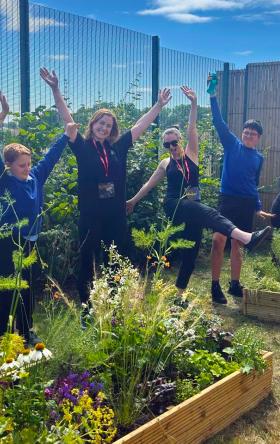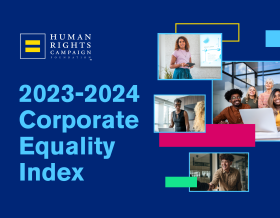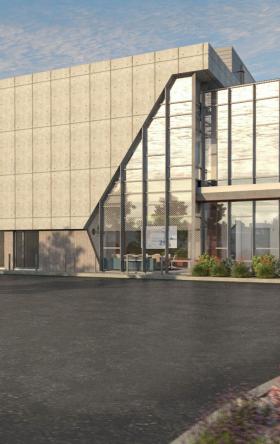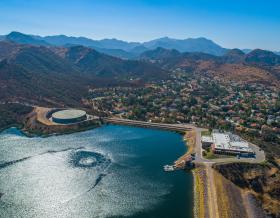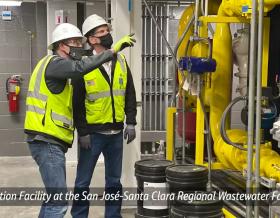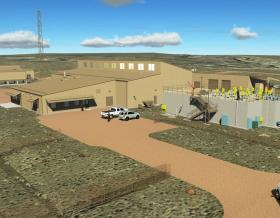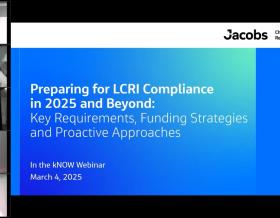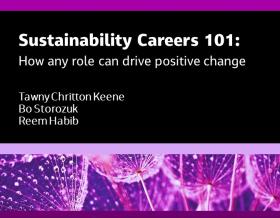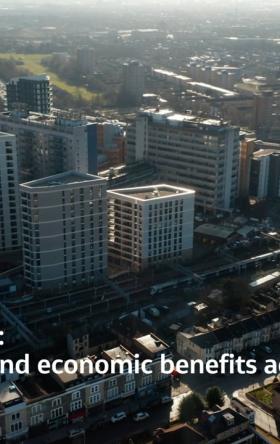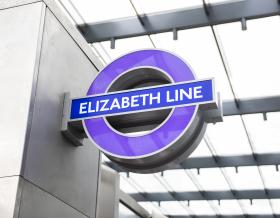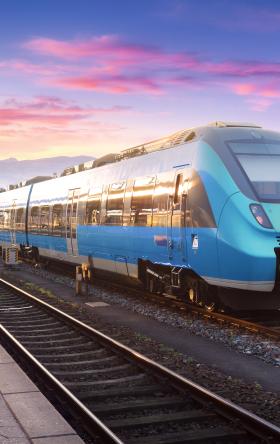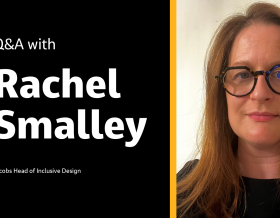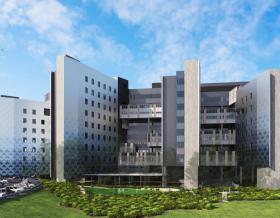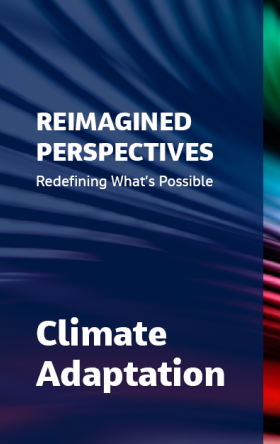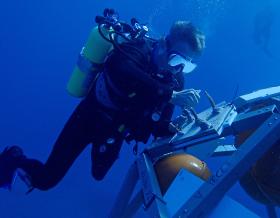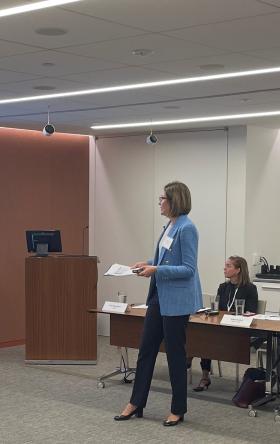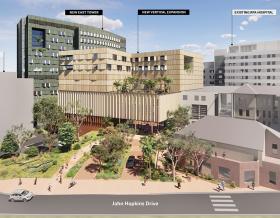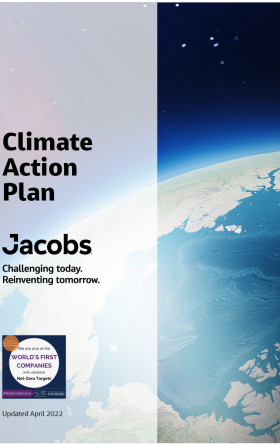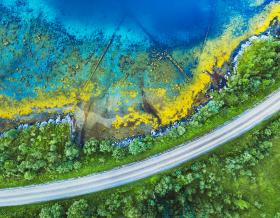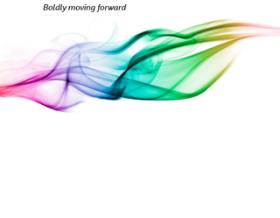
Christopher (Chris) Allen has more than 30 years of consulting and strategic management experience in regenerative and nature positive solutions. As Global Principal at Jacobs, he leads teams in designing infrastructure and landscapes that not only minimize harm but also restore ecosystems and deliver lasting value for communities. In this Q&A, Chris explains how his team applies biomimicry, natural capital and ecological design to help clients achieve measurable positive impacts on the environment and society.
This Q&A follows an Environmental Business Journal (EBJ) article published in EBJ Awards 2024 & 2025 Executive Review edition, Vol. XXXVIII, Numbers 1/2, 2025, to mark the EBJ Business Achievement Award for Jacobs’ Nature-Positive Solutions capability.
How are Jacobs’ nature positive solutions helping clients deliver stronger, more resilient projects across sectors?
Offering a suite of nature positive solutions aligns with Jacobs’ purpose of creating a more connected and sustainable world—one that leaves a nature positive legacy for the environment and our communities.
Nature positive design seeks to create a lasting, beneficial impact by transforming our relationship with nature into a reciprocal one. Our expertise includes regenerative and nature-based solutions that restore and protect natural capital and the essential ecosystem services it provides. These services are fundamental to sustainable, resilient economic and social development.
We deliver measurable, nature positive outcomes across projects by drawing on global expertise in regenerative and nature-based solutions, natural capital valuation, ecology, environmental planning, civil engineering, landscape architecture, biomimicry, water resource management, ecological restoration, finance, urban design, social value and digital technology.
In what ways has Jacobs applied biomimicry and other innovative approaches to solve client challenges in infrastructure, energy and the environment?
We collaborate with Biomimicry 3.8 and use its Positive Performance methodology as a central element of our nature positive approach. Applied to the built environment, biomimicry creates design solutions that mirror the ecosystem services provided by intact habitats. The result is facilities that contribute positively to the ecosystems in which they operate, measured by ecosystem services such as cleaner air and water, increased carbon sequestration and biodiversity gains. The long-term goal is for the built environment to function like intact local ecosystems, producing the same benefits as the surrounding wildlands.
For example, we applied Positive Performance to design the University of California, Davis, South Placer Center for Health, expanding the concept of “care” from people to the whole ecosystem. The campus master plan included design interventions that enable the new medical campus to deliver ecosystem services—particularly water-related benefits—comparable to those of nearby wildlands. The project incorporated habitat restoration and ecological priorities, such as sustainable food systems, clean energy, air quality and water systems, while meeting patient needs.
What outcomes have Jacobs’ nature positive solutions achieved in addressing climate change and biodiversity loss?
Our approach restores and designs with natural systems to enhance resilience and sustainability. This includes transforming infrastructure and the built environment to protect ecosystems and communities. A few examples include:
- Pensacola East Bay Oyster Habitat Restoration Project: In collaboration with The Nature Conservancy, we are managing the monitoring, permitting and design of a 6.5-mile shoreline restoration effort near Pensacola, Florida. The multi-year project aims to restore one of the world’s most imperiled habitats—oyster reefs—which have declined by more than 85 percent globally over the past two centuries.
- U.S. Army Corps of Engineers (USACE) – Engineering with Nature: We support USACE in integrating climate resilience and ecological restoration at U.S. Navy, Marine Corps and Air Force facilities. Together, we co-published the Natural Infrastructure for Mission Readiness at Navy and Marine Corps Installations book, outlining hazards and nature-based approaches to reduce risk and strengthen resilience. Since 2023, we have served as program manager for USACE’s first formal Engineering With Nature Design and Construction Guidelines, scheduled for release in 2025–26.
- Urban Land Institute Collaboration: We co-authored a thought leadership paper- Nature Positive and Net Zero: The Ecology of Real Estate- to highlight the role of biodiversity in sustainable development. The paper provides guidance for developers and owners to integrate biodiversity into climate strategies, protecting supply chains and asset value while supporting net zero carbon goals.
How does Jacobs track and demonstrate the benefits of its nature positive solutions for clients, communities and ecosystems?
We use the best available science to help clients set measurable and impactful nature positive strategies and key performance indicators (KPIs). Along with Biomimicry 3.8’s Positive Performance methodology, which measures ecosystem service outcomes, we work with leading nongovernmental organizations (NGOs) to align strategy and reporting frameworks. Examples of frameworks we apply:
- Nature Positive Initiative (NPI): In January 2025, NPI released its pilot State of Nature Metrics Framework after consultation with 134 organizations across finance, science, academia, civil society, and professional services. We are testing the framework with clients, alongside EcoMetrics Solutions Group, and providing feedback during the pilot phase.
- Task Force on Nature-related Financial Disclosures (TNFD) LEAP Process: A framework that helps organizations assess and disclose nature-related risks and opportunities.
- International Union for Conservation of Nature (IUCN) Global Standard for Nature-based Solutions: A set of eight criteria and 28 indicators developed through consultation with 800 practitioners from more than 100 countries. It helps stakeholders measure the effectiveness of interventions.
About the interviewee

With 30+ years of experience, Chris helps clients integrate regenerative and nature positive solutions into planning and design. He specializes in strategies that align business value with sustainability and resilience. A certified biomimicry professional, he also serves as Jacobs’ liaison to Biomimicry 3.8.
From Sustainability to Regeneration

In this paper, written in collaboration with Biomimicry 3.8, we invite you to open your mind and heart to the big picture, expand your thinking and discover how we can transform the ever-expanding built environment from a threat to climate stability and biodiversity to a showcase for a regenerative world.
